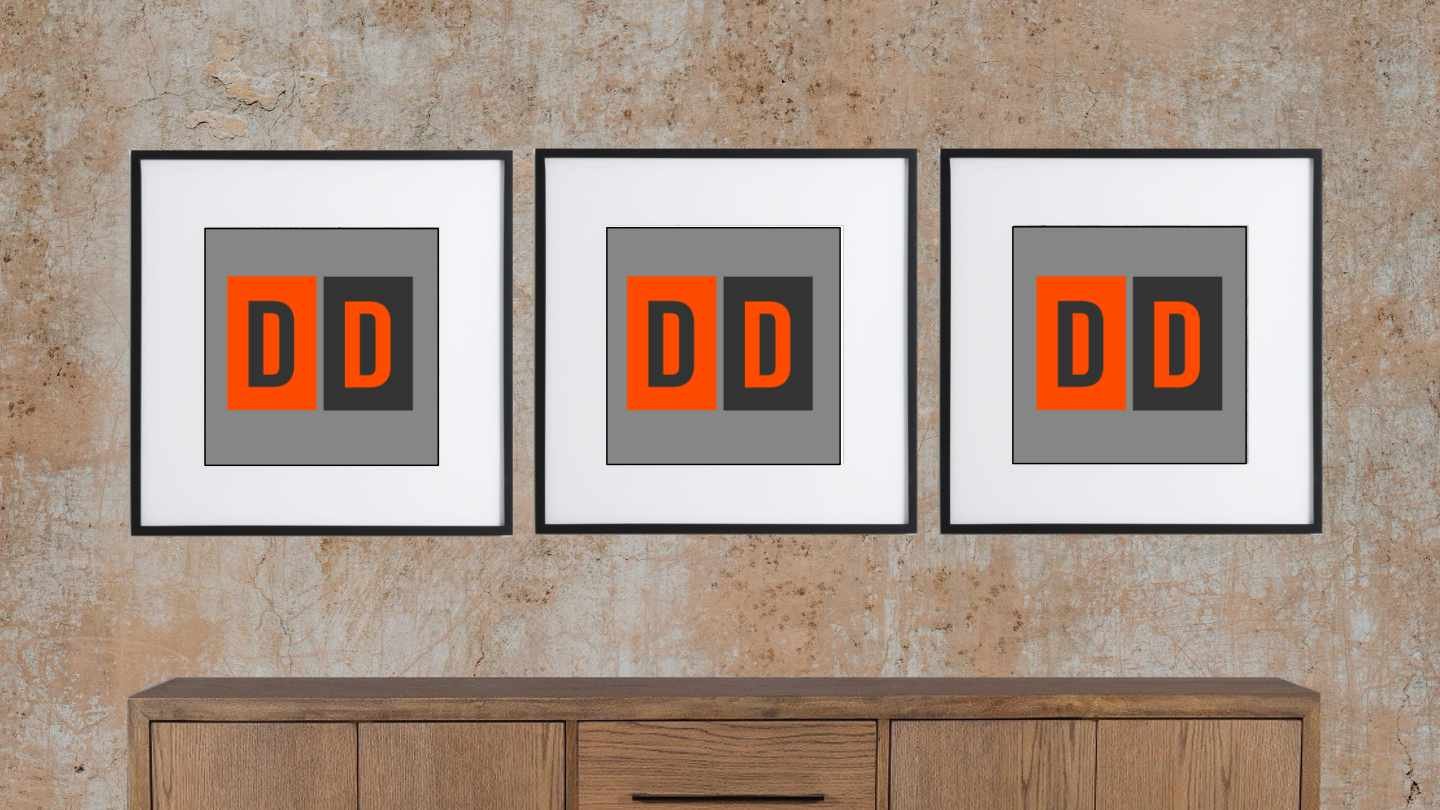
Choosing the right frames for wall art is essential to enhance the beauty of the piece while complementing your space’s overall aesthetic. A well-chosen frame can highlight the artwork’s details, harmonize with your interior design, and create a cohesive display. From sleek, modern frames for contemporary art to ornate, traditional ones for classic pieces, the frame serves as both a protective and decorative element. By considering factors such as the style of the artwork, the room’s décor, and the desired visual impact, you can ensure your wall art becomes a stunning focal point in your home or office.
Types of Frames
1. Wood Frames:
Wood frames are classic and versatile, crafted from natural or engineered wood, offering a warm and traditional aesthetic. They come in a variety of finishes, including natural wood tones, painted colors, or stains, allowing them to complement almost any decor style. Wood frames are durable, easy to customize, and often favored for their timeless appeal and organic texture.
-
- Styles: Natural, stained, or painted finishes.
- Best for: Warm, rustic, or traditional decor.
2. Metal Frames:
Metal frames provide a sleek, modern look with their smooth, polished surfaces and slim profiles. Made from materials like aluminum or stainless steel, these frames are lightweight yet sturdy, resistant to corrosion, and ideal for contemporary or industrial settings. They are often used for showcasing photographs, minimalist art, or graphic prints.
-
- Styles: Sleek, modern, or industrial looks.
- Best for: BContemporary spaces and minimalist designs.
3. Floating Frames:
Metal frames provide a sleek, modern look with their smooth, polished surfaces and slim profiles. Made from materials like aluminum or stainless steel, these frames are lightweight yet sturdy, resistant to corrosion, and ideal for contemporary or industrial settings. They are often used for showcasing photographs, minimalist art, or graphic prints.
-
- Style: Artwork appears to float between two pieces of glass or acrylic.
- Best for: Showcasing unique artwork or photography.
4. Gallery Frames:
Gallery frames are designed to showcase artwork or photographs in a polished, professional manner, similar to what you’d find in an art gallery or museum. Typically featuring a simple, clean design with a mat board to highlight the piece, gallery frames prioritize the artwork by providing a balanced and sophisticated presentation. They are available in various materials, including wood or metal, and are perfect for creating cohesive wall displays or emphasizing a single statement piece.
-
- Style: Often simple and can come in sets.
- Best for: Creating a cohesive gallery wall.
5. Shadow Boxes:
Shadow box frames are deeper than standard frames, designed to hold three-dimensional items like memorabilia, collectibles, or layered artwork. The depth allows for creative displays, making them perfect for preserving and showcasing keepsakes such as medals, dried flowers, or small artifacts. Their protective glass cover keeps items dust-free and secure.
-
- Style: Deeper frames that allow for three-dimensional objects.
- Best for: Displaying memorabilia or layered artworks.
6. Acrylic Frames:
Acrylic frames are made from clear or colored acrylic, offering a lightweight and shatter-resistant alternative to glass. They are often used for a clean, modern look and can feature frameless designs or minimalistic edges. Acrylic frames are popular for displaying photos, posters, and contemporary art, emphasizing the artwork while minimizing distractions.
-
- Style: Clear, modern, and lightweight.
- Best for: A contemporary look that emphasizes the artwork.

Wood Frames

Metal Frames

Floating Frames

Gallery Frames

Shadow Box Frames

Acrylic Frames
Tips for Selecting Frames
-
- Consider the Style of Your Art: Match the frame style to the artwork. For instance, traditional paintings look great in ornate wood frames, while modern art pairs well with sleek metal frames.
- Think About the Room’s Decor: Choose frames that complement the room’s overall design. If your space is minimalistic, consider simple frames; if it’s eclectic, you might mix and match styles.
- Color Coordination: Select frame colors that harmonize with the artwork and the wall color. Neutral frames often work well with colorful art, while bold frames can add a pop of color.
- Size and Proportion: The frame should be proportionate to the size of the artwork and the wall space. A large piece may need a wider frame to balance it out, while a smaller piece can benefit from a more delicate frame.
- Matting: Using a mat board can enhance the artwork and create a visual break between the frame and the art. Choose a mat color that complements the artwork.
- Lighting: Consider how the frames will look under different lighting conditions. Glossy frames can reflect light, while matte finishes can absorb it.
- Theme: If you’re creating a gallery wall, consider a consistent theme or color palette across the frames to create a unified look.
- Personal Touch: Ultimately, choose frames that reflect your personal style and taste. Art is subjective, and your framing choices should resonate with you.
By keeping these types and tips in mind, you can select frames that enhance your wall art and fit beautifully within your space.




0 Comments